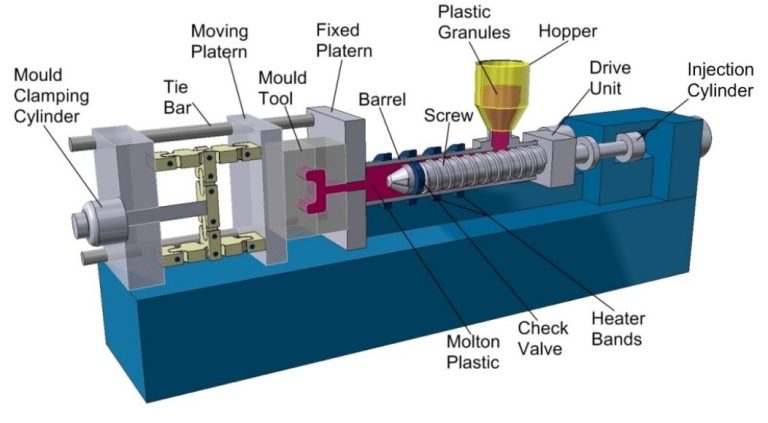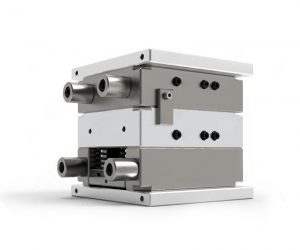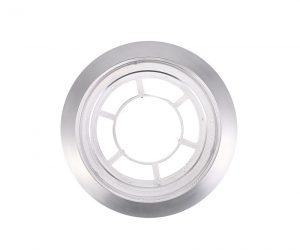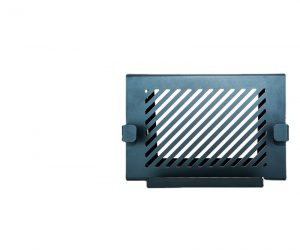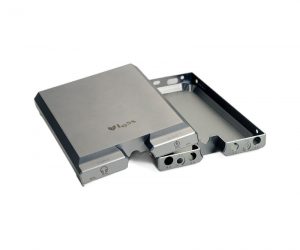The seemingly straightforward process of injection molding belies a chaotic dance of thermodynamic forces and material properties, far exceeding the simplistic narrative of melting plastic and filling a cavity. Consider, instead, a high-pressure ballet of molten polymers, where the subtle interplay of parameters dictates the fate of each nascent component. The injection speed, far from a mere rate, acts as a conductor of the flow regime, orchestrating the complex interplay of shear forces, viscoelastic responses, and the unpredictable onset of weld lines, the telltale scars of imperfect fusion. This, in turn, profoundly influences the pressure distribution, a field of dynamic forces that dictates not only the final part's density but also its susceptibility to warping, a phenomenon as capricious as it is consequential.
Cooling time, a seemingly passive parameter, is in reality a crucible of molecular rearrangement. It's a race against time, a battle between the kinetic energy of the polymer chains and the inexorable grip of the mold's chilling embrace. The outcome? A delicate balance between crystalline structure, residual stresses, and the ever-present threat of sink marks – those unsightly depressions that betray the limitations of the process. Furthermore, packing pressure, far from a simple force, is a subtle dance of pressure decay and molecular relaxation, a delicate negotiation between the desire for dimensional precision and the inherent tendency of the polymer to shrink and warp.
Mold temperature, often overlooked, is a crucial determinant of the heat transfer regime, influencing the cooling rate in a non-linear fashion, introducing unpredictable variations in shrinkage and surface finish. The melt temperature, far from a simple thermal reading, is a critical indicator of the polymer's molecular state, its viscosity, and its susceptibility to thermal degradation, a process that can subtly alter the material's properties in unforeseen ways. Packing time, a seemingly ancillary parameter, plays a critical role in the final density and dimensional stability, influencing the subtle interplay between molecular orientation and residual stresses.
In essence, injection molding is not a deterministic process, but rather a complex system exhibiting emergent behavior, where the seemingly independent parameters interact in unpredictable ways, leading to a final product whose properties are a consequence of a delicate balance – or, more often, an uneasy compromise – between competing forces. Mastering this process demands not merely technical proficiency, but a deep understanding of the underlying physics and a willingness to embrace the inherent stochasticity of the system.
The intricate dance of injection molding parameters—a chaotic ballet of interdependent variables—dictates the success or failure of any project. These parameters, far from being simply adjustable knobs, represent a complex, non-linear system whose behavior defies simplistic analysis. Optimizing this system requires not mere understanding, but a profound intuition honed by experience and informed by rigorous analysis. This is not a guide for the faint of heart; it demands a mastery of both theoretical principles and practical application.
We shall delve into the labyrinthine depths of injection molding process optimization, revealing the hidden pathways to achieving both breathtaking speed and impeccable product quality. This journey will necessitate a thorough examination of seemingly disparate elements: mold design, a crucible of geometric precision and thermal dynamics; material selection, a complex interplay of rheological properties and cost considerations; and the subtle art of temperature and pressure manipulation, a delicate balancing act demanding precise control and unwavering vigilance.
First, we confront the formidable challenge of mold design. The seemingly innocuous geometry of a mold holds the key to unlocking—or tragically hindering—the flow of molten polymer. We will explore the subtle nuances of gate placement, runner design, and cooling channel configuration, demonstrating how seemingly minor alterations can dramatically impact the final product's integrity and cycle time. This is not merely about creating a cavity; it's about sculpting the very flow of material itself.
Next, we navigate the treacherous terrain of material selection. The choice of polymer is not a simple matter of consulting a specification sheet; it's a strategic decision with far-reaching consequences. We will dissect the intricate relationships between polymer chemistry, rheology, and the desired end-use properties. Furthermore, the subtle art of additive and filler incorporation will be unveiled, a process capable of dramatically altering the material's behavior and cost-effectiveness, yet fraught with the potential for unforeseen complications.
Temperature control, far from being a simple matter of setting a dial, emerges as a critical control point. The precise manipulation of melt temperature, mold temperature, and cooling time—a three-dimensional dance of thermal energy—is crucial. Failure to achieve the optimal thermal profile will lead to internal stresses, warping, and a cascade of defects. We will analyze the underlying physics, revealing the subtle interplay of heat transfer and polymer crystallization.
Pressure adjustment, the final piece of this intricate puzzle, demands a deep understanding of the polymer's rheological response under stress. The injection pressure, holding pressure, and back pressure are not independent variables; they are inextricably linked, influencing the final product's dimensional accuracy, surface finish, and internal structure. We will unravel the complexities of these interactions, revealing the subtle art of achieving optimal pressure profiles.
Finally, we will unveil advanced techniques to accelerate the optimization process, including the strategic application of simulation software, the meticulous calibration and maintenance of machinery, and the crucial role of highly skilled operators. This is not merely a process; it is an art form, demanding precision, intuition, and a deep understanding of the underlying physics. Master this, and the path to unparalleled efficiency and product quality is yours.
How to Measure and Control Injection Molding Machine Process Parameters
The first step in optimizing injection molding machine process parameters is to measure and control them accurately and consistently. This can be done using various sensors and controllers that are installed on the injection molding machine or connected to it.
Some of the common sensors and controllers used for measuring and controlling injection molding machine process parameters are:
- Pressure sensor: A device that measures the pressure of the molten plastic at different locations in the injection molding machine, such as the nozzle, barrel, or mold cavity. It can be used to control the injection pressure, packing pressure, or back pressure.
- Temperature sensor: A device that measures the temperature of the molten plastic or the mold surface at different locations in the injection molding machine. It can be used to control the melt temperature or mold temperature.
- Flow sensor: A device that measures the flow rate or volume of the molten plastic passing through a certain point in the injection molding machine. It can be used to control the injection speed or shot size.
- Timer: A device that measures or controls the duration of certain events or phases in the injection molding cycle, such as cooling time or packing time.
These sensors and controllers can be integrated with a computerized system that can display, record,
and analyze the data collected from them. The computerized system can also provide feedback and commands to adjust the process parameters automatically or manually.
How to Optimize Injection Molding Machine Process Parameters Using Experimental Design Methods
The second step in optimizing injection molding machine process parameters is to find the optimal values or ranges of each parameter that can produce the desired product quality and performance.
This can be done using experimental design methods that can systematically vary the process parameters and evaluate their effects on the product characteristics.
Some of the common experimental design methods used for optimizing injection molding machine process parameters are:
- Taguchi method: A statistical method that uses orthogonal arrays to design a set of experiments that can test the effects of multiple process parameters and their interactions on the product quality with a minimal number of trials. It also uses signal-to-noise ratios to measure the robustness of the process parameters
against noise factors such as environmental variations or measurement errors. - Response surface method: A mathematical method that uses regression analysis to fit a polynomial function that can describe the relationship between the process parameters and the product characteristics. It also uses optimization techniques to find the optimal values or ranges of
the process parameters that can maximize or minimize the product characteristics or a combination of them. - Artificial neural network: A computational method that uses a network of interconnected nodes that can learn from data and mimic the human brain. It can model complex and nonlinear relationships between the process parameters and the product characteristics without requiring any prior assumptions or equations. It can also use optimization techniques to find the optimal values or ranges of the process parameters that can maximize or minimize the product characteristics or a combination of them.
These experimental design methods can help to find the optimal injection molding machine process parameters that can produce high-quality products with low defects, high dimensional accuracy, low shrinkage, low warpage, and high strength.
How to Monitor and Adjust Injection Molding Machine Process Parameters Using Adaptive Process Control Systems
The third step in optimizing injection molding machine process parameters is to monitor and adjust them in real-time during the production process. This can be done using adaptive process control systems that can automatically detect and correct any deviations or disturbances in the process parameters that can affect the product quality and performance.
Some of the common adaptive process control systems used for monitoring and adjusting injection molding machine process parameters are:
- Closed-loop control system: A system that uses feedback loops to compare the actual values of the process parameters with the desired values and adjust them accordingly. It can use proportional, integral, or derivative controllers or a combination of them to regulate the process parameters. It can also use fuzzy logic or artificial intelligence to handle uncertainties and nonlinearities in the process.
- Feedforward control system: A system that uses feedforward loops to anticipate and compensate for any disturbances or variations in the process parameters before they affect the product quality and performance. It can use predictive models or historical data to estimate the effects of the disturbances or variations and adjust the process parameters accordingly. It can also use adaptive learning or self-tuning techniques to update the models or data based on the actual performance.
- Hybrid control system: A system that combines both closed-loop and feedforward control systems to achieve better performance and robustness. It can use both feedback and feedforward loops to monitor and adjust the process parameters simultaneously. It can also use multiple sensors and controllers to measure and control different aspects of the process.
These adaptive process control systems can help to maintain the optimal injection molding machine process parameters during the production process and ensure consistent and defect-free products.
Conclusion
The process parameters of the injection molding machine are crucial to the quality and performance of the finished product. These parameters need to be carefully measured, controlled, optimized, monitored and adjusted. By using a variety of sensors, controllers, experimental design methods and adaptive process control systems, we can optimize the process parameters of the injection molding machine to achieve short production cycles and high-quality products.
